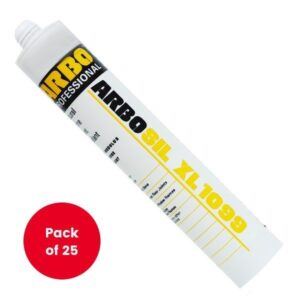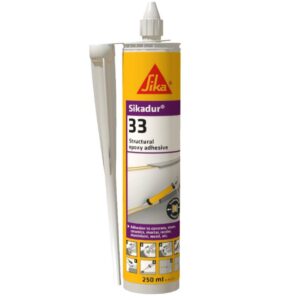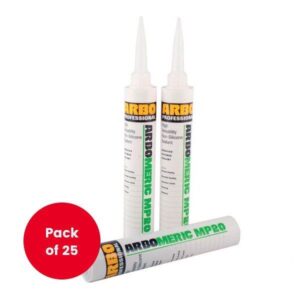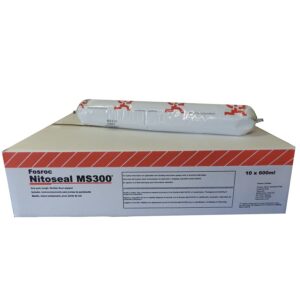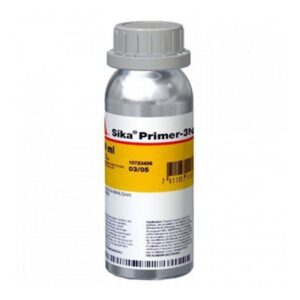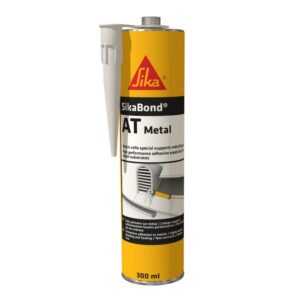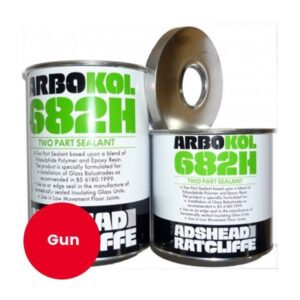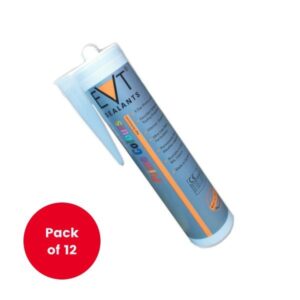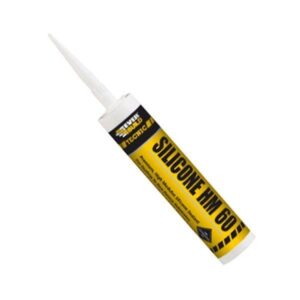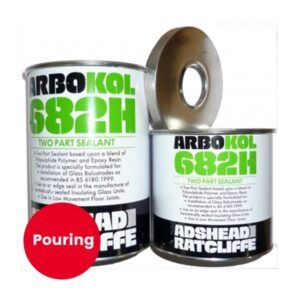What are sealants (in construction)?
In construction, the term sealants is used to describe the material used to weather proof the joins of a structure by sealing openings to prevent air, moisture, dust and heat from passing through. In the context of the building process, you would use sealants for the adhesion required to create a seal.
How are sealants used?
Sealants share a lot of similarities with adhesives when it comes to their function. The main features that set sealants aside are the lower strength and higher elongation they provide compared to adhesives. As suggested by the name, sealants are mainly used to seal various elements (e.g. constructions and joints) together.
Depending on the environment and the materials you bond sealants to, they can provide flexibility and elongation as well as adhesion. The paste-like consistency of sealants allows them to fill substrate gaps easily, while the elastomer used to formulate them makes them more malleable.
Sealants can be categorised as either adhesives or caulks, based on their key features. Despite being less powerful than adhesives, the main benefit of sealants lies in their ability to keep moisture out (or in) the material they’d been used to seal. Specialised heat resistant sealants can also contain fire, smoke and toxic fumes, while others, such as Sikaflex PRO-3, provide excellent thermal and sound insulation.
What is an adhesive?
Commonly referred to as glue or paste, an adhesive is a non-metallic material you can use to bind two substrates together. There are two main types of adhesives – natural and synthetic. Natural adhesives date back centuries and, as the name suggests, occur naturally in our environment. The production and development of synthetic adhesives, on the other hand, increased rapidly in the 20th century, popularising them as an alternative.
How are adhesives manufactured?
Early natural adhesives were made from organic ingredients such as birch bark and tar tree resin, and by mixing plant gum and iron oxide together. Past civilisations used natural and starch-based glues to make furniture and clothing by binding material such as fabrics, paper, wood and stone.
Animal and starch-based adhesives are manufactured by extracting material from natural sources and applying a series of treatments to transform them into glue. Starch-based adhesives are usually made from seeds, tubers and the roots of plants. The paste made from them is environmentally friendly and widely used on paper and cardboard.
Cellulose glues, on the other hand, are derived from chemically processing woody plants to enhance their binding properties. These are also used primarily for paper products such as wallpaper, labels and decals.
Rubber-based adhesives, on the other hand, are made from dissolved natural rubber. Once it has been treated with solvents, the rubber is mixed with resins and other compounds. It’s then made into a polymer-based adhesive using heat or chemical catalysts.
Natural adhesives are still widely in use, mainly due to their environmental benefits and low cost. However, compared to synthetic adhesives, they are less resistant to chemicals, moisture and heat. Synthetic adhesives can also be enhanced for particular applications, so they are even more durable and easier to apply.
How are adhesives classified?
Conveniently, adhesives are classified based on their method of adhesion. Then, depending on whether they harden through a chemical reaction, they are further broken down into reactive and non-reactive adhesives.
How to tell if an adhesive is cured?
In the simplest terms, an adhesive is cured once it turns from liquid into a solid. Heat exposure, photo initiation and adding an activator are all common methods for curing adhesives.
How quickly and thoroughly an adhesive cures depends on a number of variables, including the part substrate(s), the temperature of the environment and the amount of adhesive (and activator) used. The transmission of light (both visible and UV), it’s intensity and the length of exposure can also influence the rate at which the adhesive cures.
Where to buy adhesives?
Solseal supply industry-leading sealants and adhesives from a range of popular brands. Browse our full range above to find the best solution for your construction needs.

